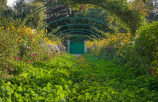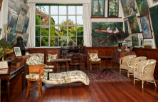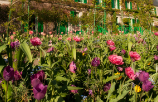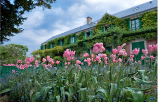Historique
Cathedrals upon cathedrals….
February 1892. Claude Monet arrives for a stay in Rouen, at 31 Place de la Cathédrale. From his window he can admire the tall, majestic Gothic building. It is love at first sight for the artist…
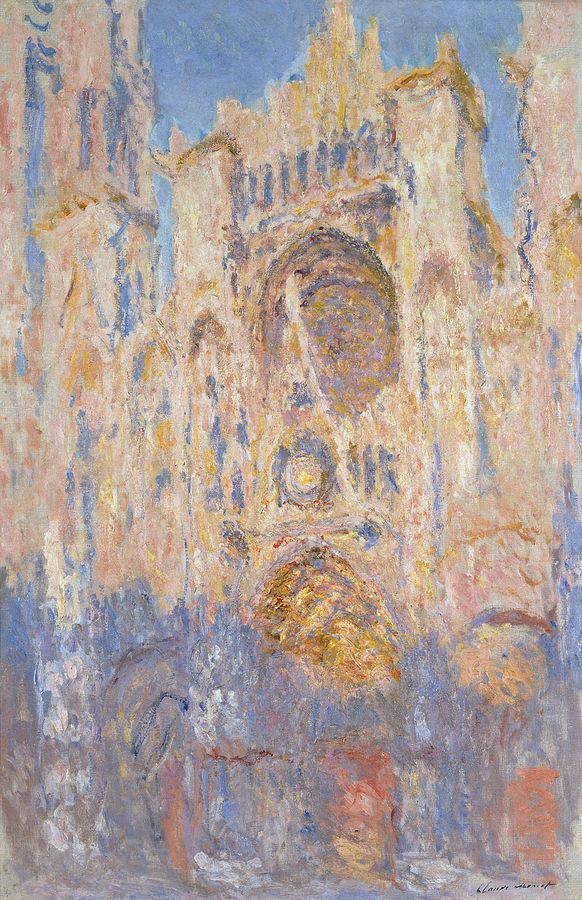
Did you know that the illustrious Rouen Cathedrals series arose from a simple inheritance matter? In order to settle his half-sister (Adolphe Monet’s legitimate daughter) Marie’s estate, Claude Monet travelled to the ‘city of a hundred bells.’ Staying in an empty apartment opposite the cathedral, the artist was instantly captivated by the light shifting across the enormous façade. After having to return to Giverny, Claude Monet could not resume his observation point in Rouen as it had been invaded by interior and exterior painters. Clothing merchant Fernand Levy had a ‘lingerie and fashion’ boutique at 23 Place de la Cathédrale and offered the artist space there. So Claude Monet set up his easel in the fitting room! “The fashionable afternoon clients failed to appreciate the presence of this bearded man with his back to them, whose gaze seemed to swing in a regular pendulum motion between the cathedral’s façade and the easel upon which a canvas received a few more brush strokes each time,” reported Daniel Wildenstein in ‘Monet. The Triumph of Impressionism.’ A privacy screen was installed to give the artist – and the clients! – some peace. There were numerous obstacles to overcome. In fact, it was a laborious task to depict all the nuances of the natural light on the cathedral’s walls in this city whose fickle weather is almost legendary. Fog, cloudy skies, sunshine and rain followed each other without warning. The artist staunchly persisted in “reproducing the atmosphere bathing the motif…”
Painted between 1892 and 1893, then post-dated 1894, the series includes no fewer than 28 views of the western entrance and two views from the Albane courtyard on the side of the building. During this colossal undertaking, the artist battled, had nightmares, reworked and endlessly retouched his canvases. “Good lord! This cathedral is so much work! It’s terrible!” he wrote to his wife, Alice Hoschedé. “I’m exhausted, I can’t do it anymore and I had nightmares all night,” he recounted in another letter. “The cathedral crumbled on top of me, it was blue, pink and yellow…” Claude Monet finished his paintings in his Giverny studio. He selected 20 of them to display in his art dealer Paul Durand-Ruel’s Parisian gallery.
This astonishing series, where the impressionist artist thoroughly explored his subject, gave rise to his systematic interest in studying the same motif under different lights. And who better than his loyal friend Georges Clemenceau to analyse this amazing undertaking: “As long as the sun shines on it, the Rouen cathedral will have as many aspects as you can create divisions of time. A perfect eye can distinguish them all, as they consist of vibrations that are perceptible even to our actual retina. Monet’s pioneering eye precedes us and guides us towards the visual evolution that makes our perception of the world more penetrating and subtle…”




